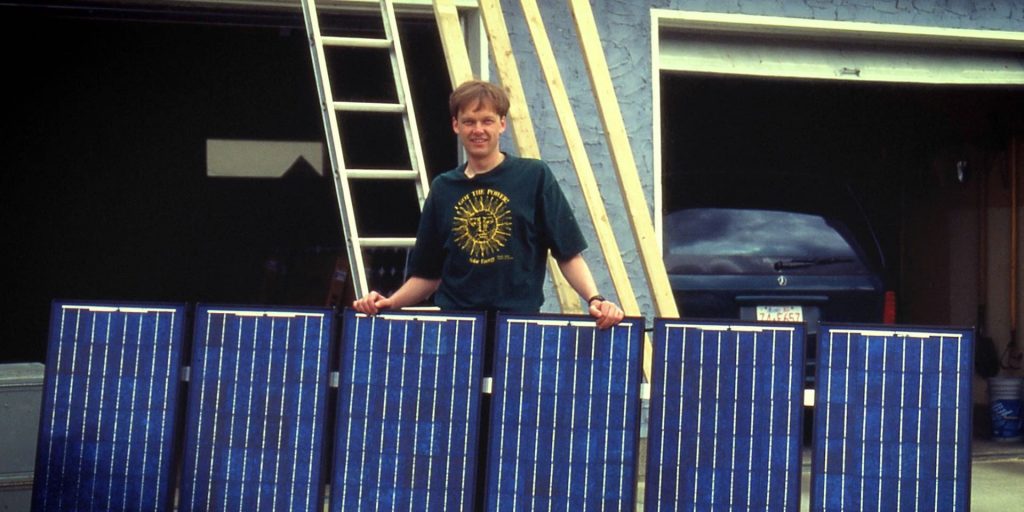By David Dodge, GreenEnergyFutures.ca
Skyfire Energy was one of the first Alberta solar companies. They set up shop 21 years ago when solar was not cheap.
“I think the parts alone for that first system, Dave built in 2001 was $22 a watt so, you know, very expensive compared to today,” says David Vonesch talking about his partner and founder of Skyfire Energy, David Kelly.
So, let’s say you wanted a 7.5-kilowatt solar system for your home. Back then it would have cost you $150,000. Today the price is ten times lower.

Thank goodness many people really believed in the future of solar and started installing solar back then on principle. They certainly were not doing it for the return on investment.
Green Energy Futures has done many stories on solar over the years and I remember solar advocates cranking out the spreadsheets to make the case for installing solar back when solar was expensive and electricity was cheap.
Today it’s a whole different story. Solar is now the cheapest way to generate electricity and the industry is booming.
“There’s roughly a billion dollars worth of solar under construction in Alberta right now,” says Vonesch adding there is another “10 billion of additional solar under development.”
“It’s pretty incredible to see coming from very humble roots 15, 20 years ago in our business, to see the industry where it’s at right now.” All sectors of solar are booming from small scale on homes to solar mega projects such as the Travers 465-megawatt solar project in southern Alberta.

Solar is cheap and incentives are available
The federal government recently launched their greener homes initiative that will provide homeowners up to $5,000 to go solar. The feds have also just launched a $40,000 Greener Homes interest free loan program as well.
David Vonesch says an average home solar system will cost between $12,000 to $15,000. “You can pull a rebate from the feds for around a third of that and, and from there you can finance the rest.”
He says paybacks in Alberta are running about 10 years right now, which means you will essentially be getting free electricity for 15 years since the modules are guaranteed for 25 years.
You will also protect yourself from rising energy prices, carbon pricing and uncertainty that is most certainly coming as climate change accelerates.
The bottom line is: “Solar is a pretty good deal right now.”
This example is from Alberta and regulations and grid policies vary from province to province. In Alberta if you manage your electricity contracts properly many users wind up with a credit at the end of the year with the solar paying for the electricity and all of the other charges.
Solar pioneers paved the way for cheap solar

Skyfire worked with Jayman Built Homes in Alberta to help them become the first home builder to include solar with every new home. Now Jayman has various packages to get homeowners on the pathway to net-zero.
Skyfire also worked with the Hutterites of the Green Acres Colony to build two megawatts of solar to power their recycling business and the farm in Bassano, Alberta.
Evansdale Community League in Edmonton installed 26 kilowatts of solar, enough to cover 95 per cent of their net annual electricity needs and the community organization has had a credit on their electricity bill for the second year in a row.
Increasingly solar is being seen as the kissing cousin of shallow geothermal (geoexchange) systems which heat homes at rates of 200-300 per cent efficiency and cool them at even higher levels of efficiency. Solar provides the electricity for the heat pumps which negates the need for natural gas and the natural gas bill.
Solar is definitely booming at utility scale around the world and in Alberta in Canada, but it seems like the day is coming when many more people will put solar on their homes because it protects them from future energy shocks, it’s cheaper, and for increasing numbers of people its about doing their part to reduce their carbon emissions.





